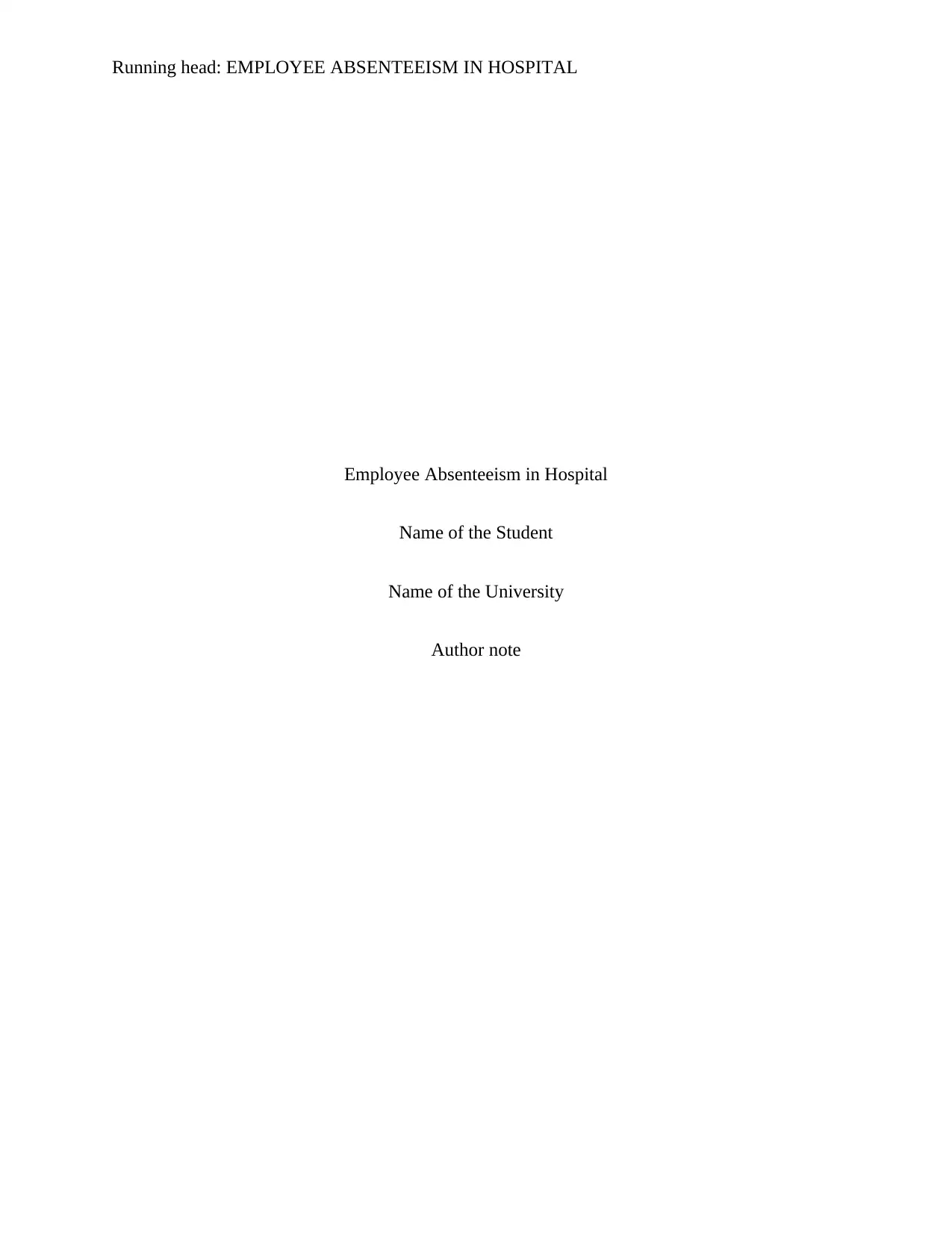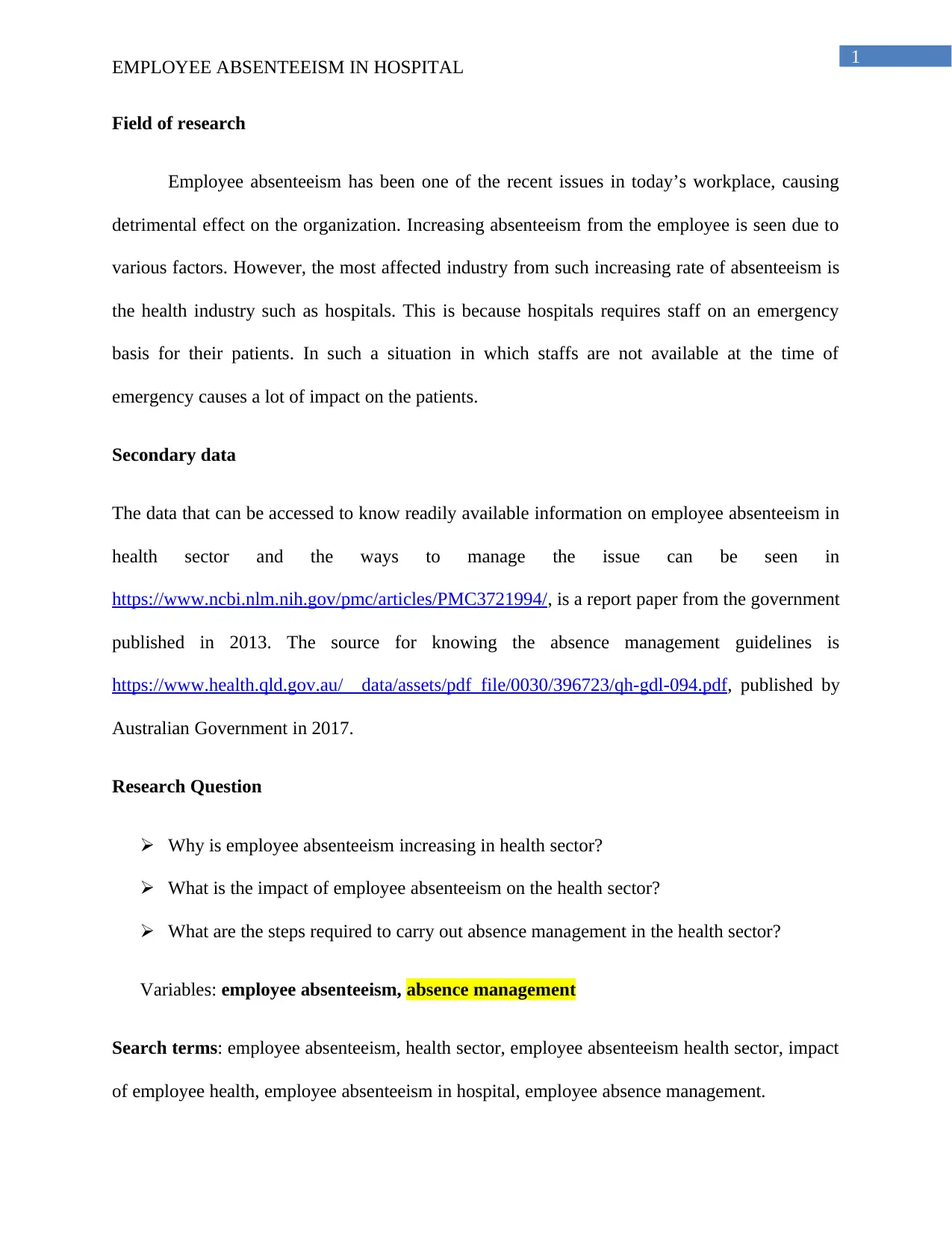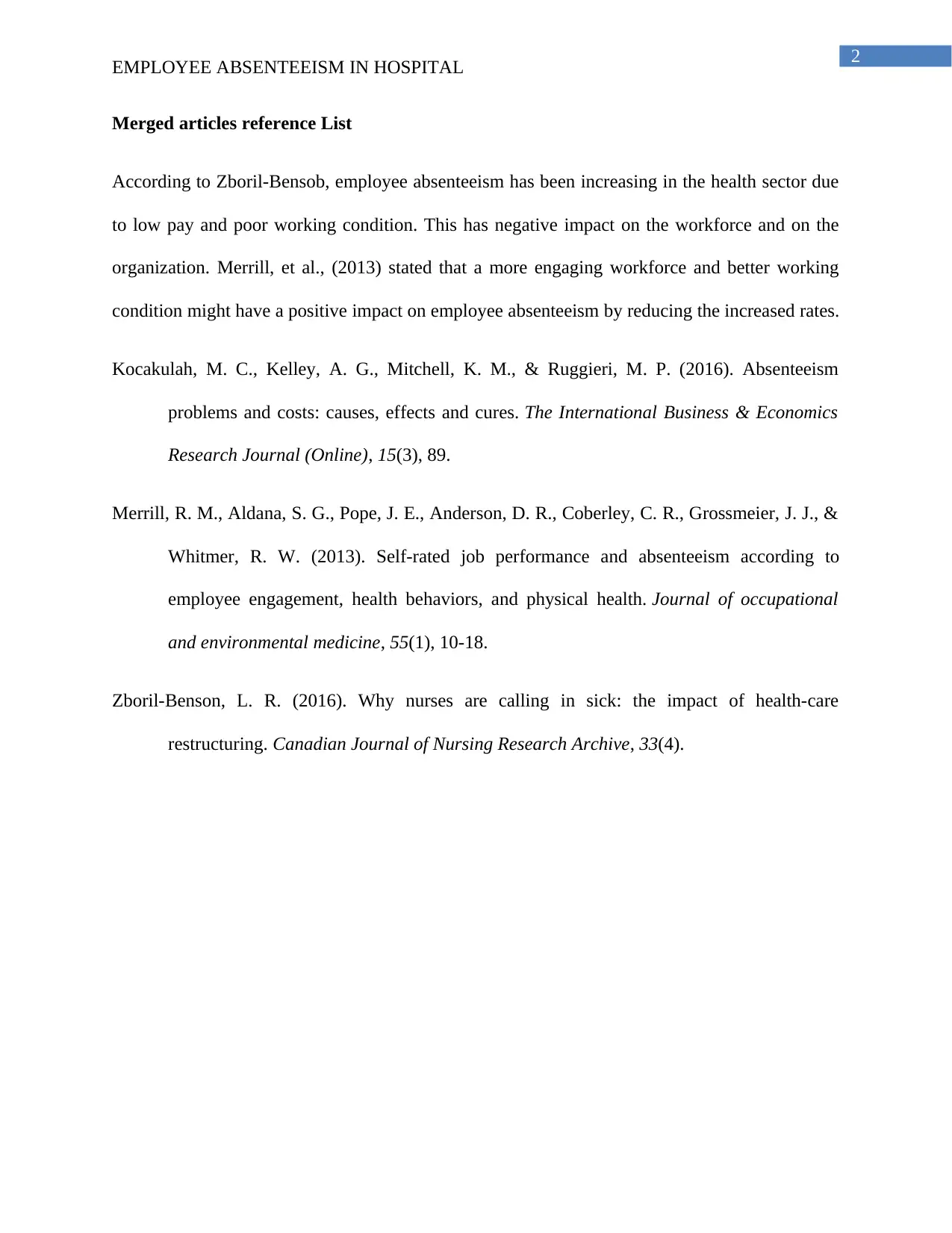Employee Absenteeism in Hospital: A Comprehensive Research Report
VerifiedAdded on 2020/04/13
|3
|486
|47
Report
AI Summary
This report delves into the critical issue of employee absenteeism within the healthcare sector, specifically focusing on hospitals. The research explores the increasing rates of absenteeism, attributing it to factors such as low pay and poor working conditions, as highlighted by Zboril-Benson. The report investigates the impact of absenteeism on the workforce and the organization, emphasizing the need for strategies to address the issue. It examines relevant research, including studies by Merrill et al. (2013) and Kocakulah et al. (2016), to understand the causes, effects, and potential solutions. The report also outlines the importance of effective absence management, referencing guidelines from sources like the Australian Government. Key research questions include: why employee absenteeism is increasing, its impact on the health sector, and the steps required for effective absence management. The report aims to provide a comprehensive overview of the issue, offering insights into the challenges and potential solutions for hospitals.
1 out of 3










![[object Object]](/_next/static/media/star-bottom.7253800d.svg)